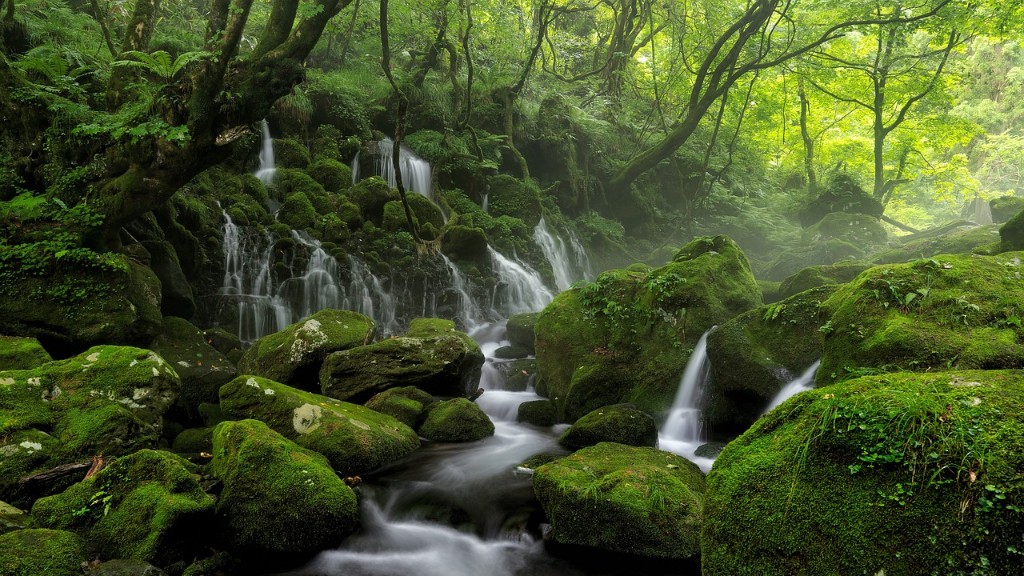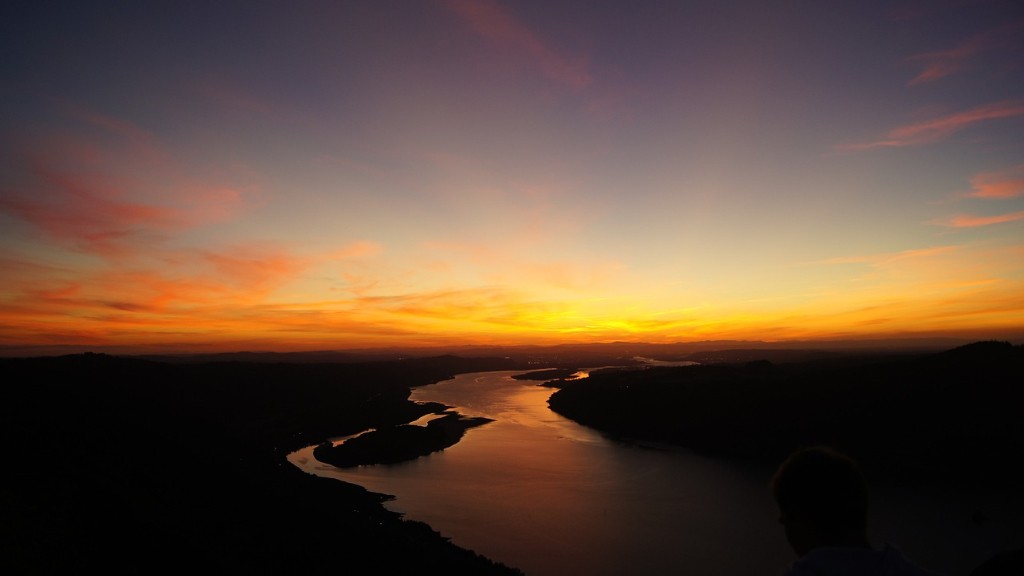The Nile River is one of the world’s longest rivers, and is undoubtedly the most important river in Africa. Originating in the Great Lakes region of East Africa and flowing through Egypt, Sudan, and other eastern African countries, the Nile River eventually reaches its final destination at the Mediterranean Sea, and the great body of waters that borders the African continent.
The Nile River is approximately 6,853 kilometers in length, and serves to provide primary and secondary water sources, as well as agricultural land for millions of people in Africa. The main tributary of the Nile is the White Nile, which is fed by the Victoria and Albert Lakes, as well as several other sources. The White Nile flows north from Lake Victoria, and merges with the Blue Nile near Khartoum in Sudan. From there, the Nile River flows towards Egypt and finally arrives at the Mediterranean Sea.
The Egyptian people have depended on the Nile River for centuries. The Nile waters have enabled them to produce cotton, grain, and other crops, which formed the basis of the ancient Egyptian agricultural system. Also, since the river was the only route between southern Sudan, Nubia, and the Delta region, the Nile was of great practical importance for trade in the region.
The Nile waters also provided ancient Egyptians with industries. As the main supplier of fish and other food, it was central to their livelihood and prosperity. The ancient Egyptians used the triangular delta for growing barley for beer and wheat for bread, and for providing a secure habitat for some species of fish. In addition, Egyptians harvested wood from the banks of the river to use for fuel, construction, and boat-building.
In recent decades, the construction of dams on the Nile River have caused environmental concerns. As the authorities have tried to control and manage the river’s flow, they have invested in costly and highly elaborate systems of dams. The Aswan High Dam, built in the 1960s, has drastically reduced the annual flooding of the Nile. By regulating the amount of water that reaches the regions along its banks, the dam can have a devastating effect on the soil fertility which has historically been achieved through natural flooding.
In many parts of Africa, much of the arable land along the Nile is intensely farmed, with little to no ecological management. This leads to an imbalance in the ecosystem of the region, which can be observed in the gradual decrease of animal populations and an overall decrease in biodiversity. High levels of pollution from the increase in agricultural activity and industrial development activities can result in contamination of the Nile waters, making them unsafe for human consumption.
Climate change is an additional factor of concern for the future of the Nile. The amount of rain and snowfall that is deposited into the sources of the Nile, in particular the Victoria and Albert Lakes, is expected to decrease as the climate changes, leading to possibly less water in the river, with a number of negative consequences. Scientists agree that it is important to find ways to make the Nile’s lifespan a sustainable one.
Building Infrastructure around the Nile
In the past few years, authorities have sought to address the increasing challenges of managing water resources in the Nile by of building infrastructure to better regulate water-sharing and increase access to clean drinking water. Ethiopia recently constructed the Grand Renaissance Dam to help capitalize on the potential of the Blue Nile—the major tributary of the Nile—for the generation of electricity. The development of the water flows through the Grande Renaissance Dam also serves to reduce the sediment load in the Nile, meaning there is less soil being transported downstream and deposited into the Mediterranean Sea.
Various international organizations also seek to provide support to countries in the Nile Basin. The Nile Basin Initiative (NBI), a regional intergovernmental organization that works with riparian countries to manage the hydropolitical framework of the river and its resources, began in 1999 to manage the competing interests of different countries. The NBI sets up mechanisms for dialogue and negotiation between those countries, involving civil society and other stakeholders.
In addition to efforts to regulate the flow of the river, increased investment in water sanitation and sewage infrastructure has proven to reduce the levels of pollution from agricultural runoff, industrial effluents, and urban sewage reaching the Nile. Significant progress has been made to reduce contaminants from human sources, though some local sources of pollution still exist.
It is clear that the Nile River is of paramount importance to millions of people and to overall health of the ecosystems of entire African continent. Efforts to improve management of the water resources will require a coordinated effort from the countries in the Nile Basin, as well as the international organizations that are invested in the sustainability of the river.
Natural Disasters and the Nile
In recent years, a number of natural disasters have affected the Nile River and its surrounding areas. In 2018, flooding in East Africa caused by heavy rain caused over a dozen deaths and affected one million people in the region.Hundreds of homes were destroyed, and the affected areas saw an increase in the population of displaced people.
There is a high risk of disease outbreaks in areas affected by flooding. Between 1998 and 2011, 18 disease outbreaks occurred as a result of floods, affecting more than two million people in the region. The lack of sanitation and proper waste management systems in the region rendered the affected area even more prone to the spread of disease.
In 2011, another notable event was the collapse of the Goreindex dam in Uganda. This disaster caused a wall of water to flow downstream and caused deadly mudslides and heavy flooding along the River. Hundreds of people lost their lives and hundreds of thousands were displaced from their homes.
In the event of a natural disaster, a coordinated regional response is essential in order to mitigate the damage of the flood and bring response strategies in line with the needs of the local communities.
In 2017, the Nile Basin Development Facility (NBDF) was launched to help governments in the Nile region by increasing access to financing, engaging in capacity building and providing technical assistance. The NBDF has worked to coordinate international response to the various floods and other natural disasters in the region, and to support vulnerable populations.
Climate Change and the Nile
As mentioned earlier, climate change is an additional factor of concern for the future of the Nile River. The scientific community agrees that climate change poses a significant risk to the sustainability of the Nile, and is becoming increasingly evident.
Due to the increase in temperature and the decrease in precipitation in the region, the amount of water flowing in the Nile is expected to decrease in the future. This decrease could potentially be offset by changes in land-use practices such as more efficient irrigation methods, but such changes take time to implement and are not yet widespread in the region.
The increased evaporation of water from the river is also likely to be a problem, as the water which evaporates is not likely to be replenished by other sources. This could prove problematic to the areas that are dependent on the Nile’s water supply as evaporation reduces the total water supply. This make-up could potentially be offset by better management of water resources in the region, but again, this needs to be backed up with regional implementation.
The concern of the need to adapt to climate change is one that requires attention and response from all countries along the Nile. Again, the support of international organizations such as the NBI and the NBDF are needed to ensure that the required measures to mitigate the effects of climate change on the Nile are able to be implemented.
Efforts to Protect the Nile
In recent years, much focus has been placed on protecting the fragile ecology of the Nile River and its surrounding areas. Some of the most important efforts to this date have been the implementation of environmental regulations which seek to limit the amount of pollutants that can be released into the river, as well as efforts to regulate fishing and hunting along the river.
These efforts have proven to be successful, with parts of the Nile being declared as a conservation zone by governments in the region. This means that certain activities, such as fishing and hunting, must be undertaken in sustainable ways that do not harm the environment. Such efforts have proven to protect certain species of fish which have seen population declines due to overfishing, as well as reduce water pollution from agricultural runoff.
The relationship between the people of the region and the Nile River is one that is often seen as a symbiotic one. For thousands of years, the river has enabled them to survive, and so there is a deep connection between the people and the river. This connection has resulted in a sense of stewardship that has driven conservation efforts. In the most recent years, the population around the Nile have become even more engaged in efforts to protect the river and its ecology.
The future of the river is ultimately in the hands of those countries and communities along its banks. Through international cooperation, collaboration, and the commitment of resources, it is possible to protect the Nile River and ensure its longevity.





